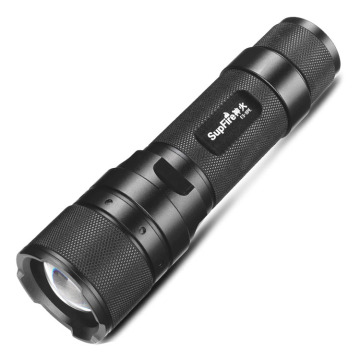Sleep-friendlier lighting is on the way from freeamfva's blog
Sleep-friendlier lighting is on the way
Don’t watch TV close to bedtime. Put away your phone, too, or you may have trouble falling asleep. You may not realize it, but the blue light from device screens and even common lamps will confuse your brain’s internal 24-hour clock. Even “white” light contains these blue wavelengths. And when blue light enters the eyes, your brain gets the message that it needs to stay awake. But a new type of lighting appears to get around these sleep-challenging effects so you can nod off easily at bedtime.To get more news about Led flashlight brands, you can visit flashlightbrand.com official website.
This new light-emitting diode, or LED, might someday deliver the glow in lamps and other types of home lighting, its developers say. It might even find use in TV, laptop and smartphone screens, says Jakoah Brgoch. He’s a chemist at the University of Houston, Texas. He also helped design the new lighting technology.

He and fellow University of Houston chemist Shruti Hariyani have been studying the properties of phosphors. These substances glow when hit with light.Light shines through the lens of an LED, usually a plastic bulb. Behind the scenes is an LED chip, which has small light-emitting diodes attached to a printed circuit board. When the chip is coated with powdered phosphors, the color of the light shining through the lens changes. The Houston team created a new phosphor to make their LED shine with a “warm” white light. Here, warm means the light contains less of the short, blue wavelengths that can mess with sleep.
Those same blue wavelengths are found in sunlight. And they tell your internal body clock that it’s time to be awake. Normally that body clock winds down as daylight fades. Melatonin is a hormone produced at night. It helps bring on sleep — unless blue light tells your body otherwise. Blue light suppresses the melatonin hormone.And our bodies may well get confused if it’s late and our eyes remain bathed in blue light from devices or indoor lighting. Even though your body craves sleep, it’s still getting that signal for wakefulness.
Most modern screens and lighting systems use blue LEDs. They are energy efficient, long-lasting and cost little. But, Hariyani says, “you have to be okay with the negative side effects [of their light] — or fix it.”Software helps some devices emit less blue light. For example, the iPhone’s “night” mode shifts its color palette. But this makes images look more red than normal, so users give up color quality. Plus, the LEDs in this and other smartphones still emit enough blue light to affect the body’s internal clock and melatonin production. People can block out some blue light by wearing yellow glasses near bedtime. However, this too will distort the hues in whatever you’re viewing.
Says Brgoch, “We wanted to know: ‘Can we get to a high-quality light bulb with warmer and better quality light?’”
LEDs create white light by mixing red, green and blue hues. While these same primary colors of pigment in paint or crayons mix to make black, light works the opposite way. The white light shining out of an LED comes from the bulb color plus the colors of the phosphors used to coat the LED. Common house lighting uses blue LEDs coated with phosphors whose colors add to the LED’s colors to make white light.

The Wall